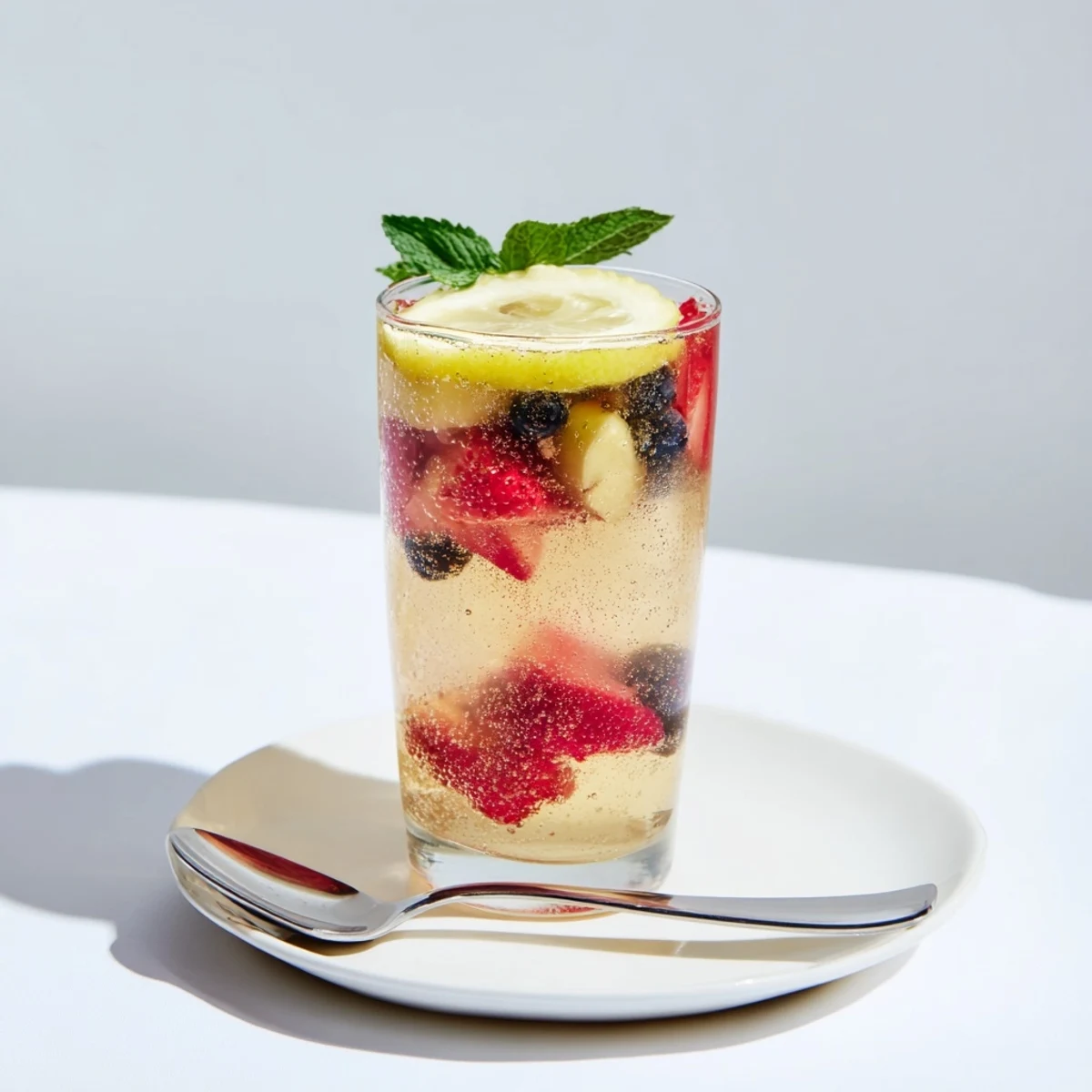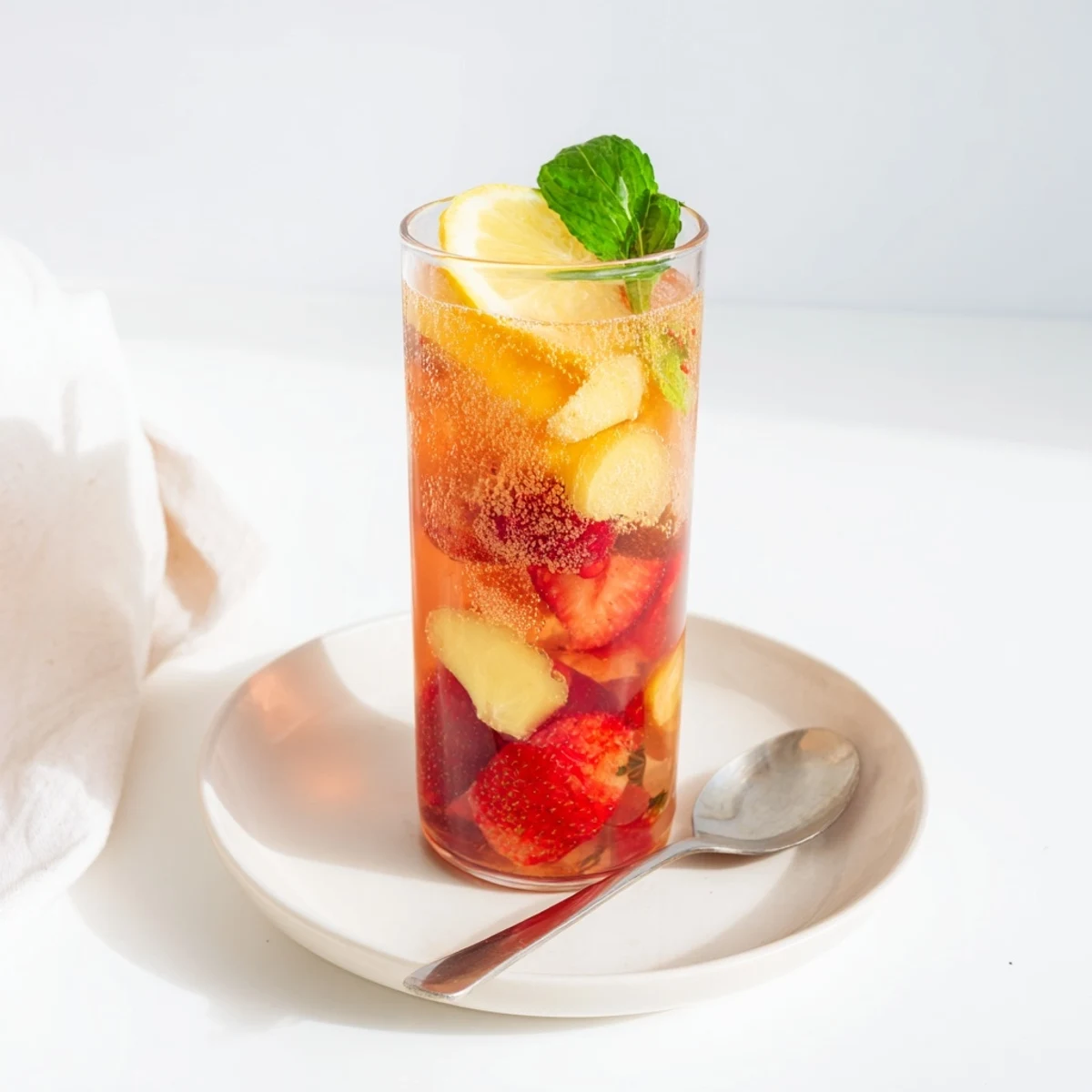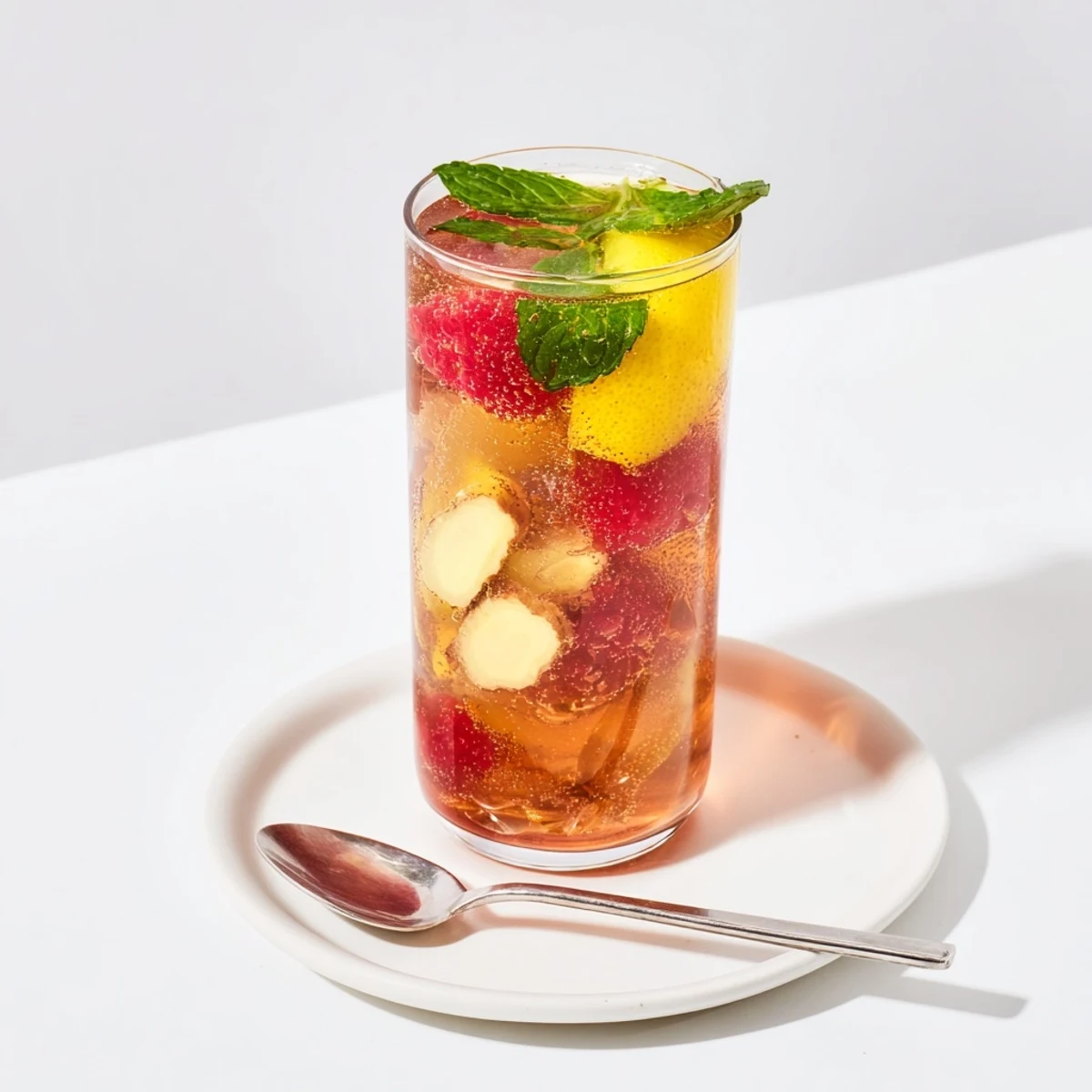 Save
Save A refreshing collection of naturally fermented beverages inspired by kombucha: enjoy healthy, alcohol-free mocktails with complex flavors and gentle fizz.
I first tried making kombucha-style mocktails during a summer break. Brewing these drinks at home quickly became a fun family tradition, turning ordinary afternoons into flavorful, healthy celebrations.
Ingredients
- Filtered Water: 2 liters, ideal for brewing and fermentation
- Tea: 8 black or green tea bags, or 2 tablespoons loose-leaf tea
- Granulated Sugar: 200 g (1 cup), essential for fermentation
- Kombucha SCOBY or Starter: 1 SCOBY or 200 ml unflavored store-bought kombucha
- Flavoring Options: Choose 1–2 per batch, or create your own. Examples: 100 g fresh berries (raspberries, blueberries, strawberries), 1 lemon or lime (thinly sliced), 1 small knob fresh ginger (sliced), 1 sprig fresh mint or basil, 2 tablespoons fruit juice (pomegranate, cherry, apple), 1 tablespoon dried hibiscus petals, 1 cinnamon stick or 3–4 whole cloves
Instructions
- Brew the Tea:
- Boil filtered water. Add tea bags or loose-leaf tea and steep for 10 minutes. Remove tea bags or strain leaves.
- Add Sugar:
- Stir in sugar while tea is hot until fully dissolved. Let cool to room temperature to protect the SCOBY.
- Combine and Ferment:
- Pour cool tea into a clean glass jar. Add SCOBY and starter liquid or store-bought kombucha.
- Cover and Ferment:
- Cover jar with clean cloth or paper towel and secure with a rubber band. Store at room temperature for 5–7 days away from sunlight.
- Check and Taste:
- Taste daily starting at day five. When tangy and slightly fizzy, it is ready for flavoring.
- Flavor and Bottle:
- Remove SCOBY and set aside starter liquid for next batch. Add chosen fruits, herbs, or spices to kombucha.
- Bottle and Carbonate:
- Pour into clean bottles with 2–3 cm headspace. Seal and ferment at room temperature for 1–3 days for extra carbonation.
- Refrigerate:
- Refrigerate bottles after desired carbonation. Strain out solids before serving.
 Save
Save We love making these mocktails for gatherings: everyone gets involved in choosing flavors, and it is always fun popping open the bottles for a taste test together.
Required Tools
Large glass jar (2–3 liters), fine mesh strainer, funnel, measuring cups and spoons, and clean glass bottles with tight lids are needed for this recipe.
Allergen Information
Contains caffeine from tea. Use certified gluten-free tea if desired. Risk of cross-contamination with nuts or allergens if adding flavorings; check all ingredient labels.
Nutritional Information (per serving)
Calories: 45. Total Fat: 0 g. Carbohydrates: 11 g. Protein: 0 g.
 Save
Save Experiment with your favorite flavors and enjoy fizzy, healthy mocktails any day. Homemade fermentation brings delicious fun and nutrition to your glass.
Recipe FAQs
- → Can I use herbal teas for the base?
It's best to use black or green tea, as their nutrients support fermentation. Herbal teas won't yield the same fizz or tang.
- → What is a SCOBY and where do I get it?
A SCOBY is a culture of bacteria and yeast essential for fermentation. You can buy one online or use unflavored kombucha as a starter.
- → How do I adjust sweetness and tartness?
Shorter fermentation gives a sweeter drink, while longer fermentation lends more tang and mild sourness. Taste daily to choose.
- → What flavor combinations work well?
Popular options include berry-mint, ginger-lime, and apple-cinnamon. Experiment with fruit, herbs, or spice pairings as desired.
- → Is this drink suitable for special diets?
Yes, it's vegan and gluten-free if you use committed gluten-free teas and check labels on flavor additions to avoid allergens.
- → Why use glass containers for fermentation?
Glass won't react with acidic fermenting liquids, ensuring flavors stay pure and your batch remains safe throughout fermentation.